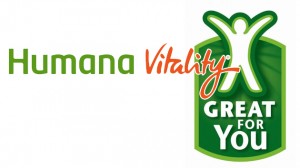 Good food is a key component of health. So when Humana partners with Walmart to discount good-for-you foods, it’s a sign in the market that two of America’s most visible health brands are looking to motivate people to eat healthier — and, to be sure, drive sales in the growing health marketplace.
Good food is a key component of health. So when Humana partners with Walmart to discount good-for-you foods, it’s a sign in the market that two of America’s most visible health brands are looking to motivate people to eat healthier — and, to be sure, drive sales in the growing health marketplace.
This unique partnership brings together one of the nation’s largest health insurance companies with the world’s largest retailer. The venture joins HumanaVitality, a rewards program providing incentives for members (currently, about one million) to make sound health decisions, and Walmart, who will offer 5% savings on products that are part of the store’s Great For You program, whose icon is shown in the graphic. Walmart launched the Great For You program in February 2012 as part of the company’s migration toward nutritious food options. Examples of Great for You tactics are:
- Reducing sodium in Great Value ketchup by 15%
- Reducing sodium in Great Value canned vegetables by an average of 15%
- Reducing sodium in beef products by over 70%.
The plan will kick off on October 15, 2012, for HumanaVitality members. Foods that will be part of the Great For You program include fresh fruits, vegetables and low-fat dairy. Before joining the program, consumers will complete a HumanaVitality Health Assessment, then they’ll receive a “Vitality HealthyFood” card for 5% savings on the Great For You labelled products.
Walmart became quite visible in 2011 when First Lady Michelle Obama was present at the company’s announcement that it would enhance the nutrition of products in its stores. Health Populi covered this event here in Will people see ‘health’ when they see Walmart? in June 2011.
The CEO of the Clinton Foundation’s Health Matters Initiative, Ginny Ehrlich, has chimed in on the Walmart/Humana connection, saying, “We need innovative thinking and new partnerships to successfully address our country’s alarming healthcare issues.”
Health Populi’s Hot Points: The Walmart-Humana connection is an important example of how to extend primary care, everywhere — where people live, work, play and pray — to bolster peoples’ everyday “healthstyles.” Food and health-enhancing retail purchases are two key areas of peoples’ 24×7 lives, outside of the doctors’ office. Good food habits are an integral part of THINK-Health’s concept of HealthcareDIY.
The U.S. is under-served in terms of primary care physician resources, both in raw numbers and in the distribution of these doctors throughout the U.S. This is one of the crucial reasons why America’s health system under-performs compared with health systems around the developed world. Primary care providers undergird the most high performing health systems outside of the U.S., a phenomenon researched by The Commonwealth Fund for many years.
NPR covered the trend for elite medical schools to emphasize primary care on September 23, 2012. A key motivation for med schools is the Affordable Care Act’s incentives for allocating more resources toward training more primary care practitioners, and paying them more.
While this strategy will take many years to unfold and impact the U.S. health system, it’s a move in the right direction. In the meantime, community-based efforts close to people’s homes, workplaces and schools, like the Humana-Walmart program, can enhance public health and support people in making good daily decisions for their and their loved ones’ health.




 I am so grateful to Tom Lawry for asking me to pen the foreword for his book, Health Care Nation,
I am so grateful to Tom Lawry for asking me to pen the foreword for his book, Health Care Nation,  Thanks to Feedspot for naming this blog, Health Populi, as a
Thanks to Feedspot for naming this blog, Health Populi, as a